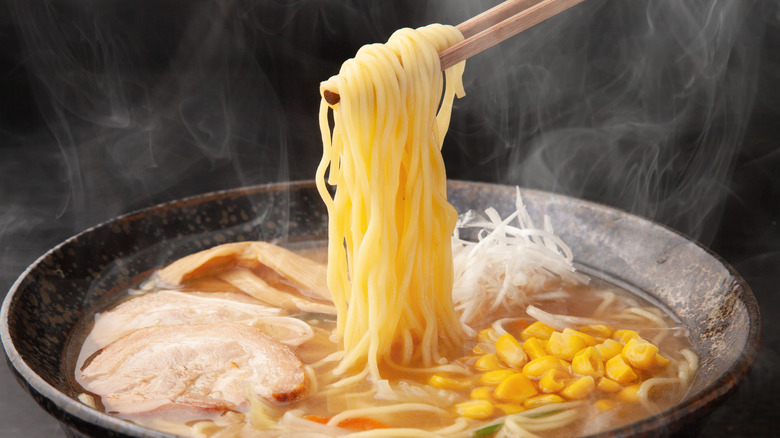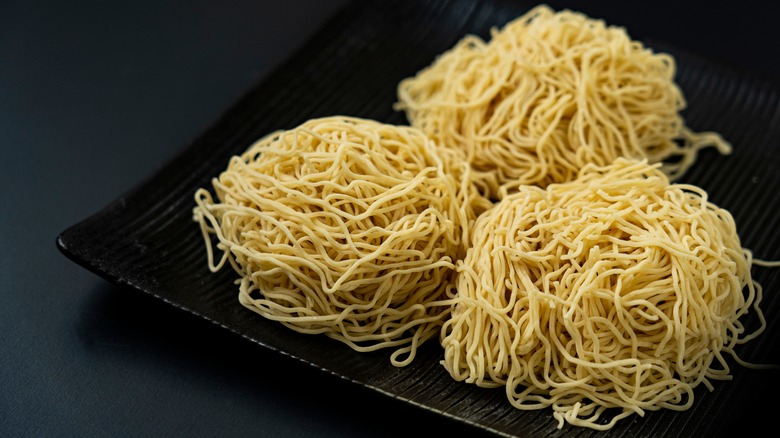The Reason Ramen Noodles Have A Yellow Tint
We may receive a commission on purchases made from links.
Not just for college students. Ramen has a history and longevity way richer than Maruchan's retail price.
Ramen originated in China, according to Japanese Food Guide, and has since expanded into so many varieties that they are now formally categorized by broth type, cooking method, region, and flavor. Today, China is the top consumer of instant ramen in the world, boiling at least 40 billion bowls every year, via Insider. When the pandemic hit in 2020, Bloomberg reports that Walmart's online sales of instant ramen skyrocketed by 578% in just one month's time, between February 23 and March 21.
A steamy bowl of ramen doesn't have to be made at home, or instantly. The US is dotted with many sit-down ramen restaurants, even as fancy as multiple-time Michelin star and James Beard award-winning noodle spot Momofuku.
Whether you prefer your ramen spicy or with a mild miso taste, you've probably noticed the noodles' signature yellow tint. It doesn't come from the flavorings – the hue is found in the noodles themselves. So, what's the secret ingredient?
The key is kansui
According to Serious Eats, ramen is made from a combination of simple ingredients: water, wheat flour, salt, and a key ingredient called "kansui." Kansui, an alkaline solution, is what gives ramen its yellow tint. Technically, kansui is 80% potassium carbonate and 20% baking soda, per Omnivore's Cookbook. Kansui's natural alkalinity makes the entire boiling pot slightly alkaline, which helps prevent the noodles from dissolving in the water as they are cooked, per Yamato Noodle. It also gives ramen noodles their signature elastic bounciness.
If you can't get your hands on any kansui, Recipes Journey recommends substituting a small amount of starch and eggs, which will provide that same kansui elasticity and golden hue. Or, for a vegan option, Fine Cooking suggests mixing 1 teaspoon baking soda with 4 teaspoons of water. The ingredient is available in most Asian markets, it says, but if there aren't any in your neighborhood, these replacements should do the trick for springy, golden ramen art home.

